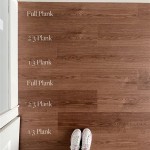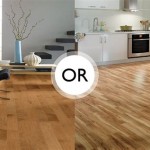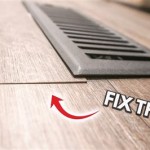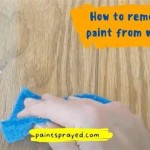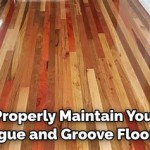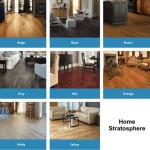Beautiful And Durable Natural Birch Flooring For Kitchens
The kitchen, often considered the heart of the home, undergoes significant daily wear and tear. From spills and dropped items to heavy foot traffic, the flooring in this space needs to be both aesthetically pleasing and exceptionally durable. Natural birch flooring presents a compelling option for kitchens, offering a blend of beauty, resilience, and sustainability that appeals to homeowners seeking long-lasting value.
Birch, as a hardwood species, possesses inherent qualities that make it well-suited for kitchen environments. Its lighter coloration lends itself to various design aesthetics, from contemporary minimalist schemes to more traditional, warm-toned spaces. Furthermore, birch is a relatively affordable hardwood option compared to species like oak or maple, making it an attractive choice for budget-conscious homeowners without compromising on quality.
However, understanding the specific characteristics of birch and how they translate to kitchen performance is crucial before making a final decision. This article will delve into the various aspects of natural birch flooring, including its durability, aesthetic versatility, maintenance requirements, and compare it with other common kitchen flooring options. The aim is to provide comprehensive information to assist homeowners in determining if birch flooring is the right choice for their kitchen.
Understanding the Durability of Natural Birch Flooring
The durability of any flooring material is a primary concern for the kitchen. Birch, while a hardwood, is not as hard as some other species frequently used in flooring, such as oak or hickory. The Janka hardness scale is a standard measurement used to rate the resistance of wood species to denting and wear. Birch typically ranges between 910 and 1260 on the Janka scale, depending on the specific type of birch (e.g., yellow birch tends to be harder than paper birch). Oak, for comparison, typically ranges from 1290 to 1360.
This lower Janka rating means that birch is more susceptible to denting and scratching compared to harder woods. However, this does not necessarily disqualify it from being a suitable kitchen flooring material. With proper care and maintenance, as well as the application of a durable finish, birch flooring can withstand the demands of a moderately busy kitchen. Choosing engineered birch flooring, as opposed to solid birch, can also enhance its dimensional stability and resistance to warping or cupping due to moisture fluctuations common in kitchens.
The finish applied to birch flooring plays a significant role in its overall durability. A high-quality polyurethane finish, for instance, creates a protective layer that shields the wood from scratches, stains, and moisture penetration. Regular re-coating of the finish every few years can further extend the lifespan and maintain the appearance of the flooring.
Furthermore, preventative measures such as using area rugs in high-traffic zones (e.g., in front of the sink or stove) and placing felt pads under furniture legs can minimize the risk of damage. Promptly cleaning up spills and avoiding abrasive cleaning products will also contribute to the longevity and durability of birch flooring in the kitchen.
Aesthetic Versatility and Design Options
One of the significant advantages of natural birch flooring is its versatility in complementing various kitchen design styles. The light, creamy coloration of birch provides a neutral backdrop that allows other design elements, such as cabinets, countertops, and backsplash materials, to take center stage. This makes it an excellent choice for both contemporary and traditional kitchens.
Birch flooring can be stained in a wide range of colors, from light natural tones to darker, richer hues. This allows homeowners to customize the look of the flooring to match their specific preferences and the overall aesthetic of their kitchen. A light stain can enhance the natural grain pattern of the wood and create a bright, airy feel, while a darker stain can add warmth and sophistication to the space.
The grain pattern of birch is generally subtle and consistent, which contributes to its clean and modern appearance. Unlike some other hardwoods with more pronounced grain patterns, birch provides a more uniform look that can be particularly appealing in minimalist or contemporary kitchens. However, variations in grain pattern can still occur, adding character and visual interest to the flooring.
Different types of birch flooring are available, each with its own unique aesthetic qualities. For example, yellow birch tends to have a slightly warmer tone and a more pronounced grain pattern than paper birch. Choosing the right type of birch can further enhance the aesthetic appeal of the kitchen.
The width of the birch planks also influences the overall look of the flooring. Wider planks can create a more expansive and luxurious feel, while narrower planks can add a more traditional and rustic touch. Mixing different plank widths can also create a visually interesting and dynamic floor.
Maintenance and Care of Natural Birch Flooring in the Kitchen
Proper maintenance is essential for preserving the beauty and extending the lifespan of natural birch flooring in the kitchen. While birch is relatively easy to clean and maintain, it does require regular attention to prevent damage and maintain its appearance.
Regular sweeping or vacuuming is crucial for removing dirt, dust, and debris that can scratch the surface of the flooring. Using a vacuum cleaner with a soft brush attachment is recommended to avoid damaging the finish. Avoid using vacuums with beater bars, as these can scratch the wood.
Mopping with a damp cloth or mop is also necessary to remove spills and stains. However, it is important to avoid over-wetting the flooring, as excessive moisture can damage the wood. Use a mild, pH-neutral cleaner specifically designed for hardwood floors. Avoid using harsh chemicals, abrasive cleaners, or vinegar-based solutions, as these can dull the finish and damage the wood.
Promptly cleaning up spills is crucial for preventing stains and water damage. Use a clean, dry cloth to blot up spills immediately. Avoid allowing spills to sit on the flooring for extended periods of time.
Protecting the flooring from excessive moisture is also important. Ensure that dishwashers and refrigerators are properly sealed to prevent leaks. Use mats or rugs in front of sinks and other areas where water is likely to be spilled. Consider installing a dehumidifier in the kitchen if moisture levels are consistently high.
As previously mentioned, re-coating the finish every few years can help to protect the flooring from wear and tear and maintain its appearance. The frequency of re-coating will depend on the amount of traffic the floor receives and the type of finish used.
Addressing scratches and dents promptly is also important. Minor scratches can often be buffed out with a scratch repair kit. Deeper scratches or dents may require professional repair.
Comparison with Other Kitchen Flooring Options
When considering flooring for a kitchen, it's important to evaluate different options to determine the best fit for specific needs and preferences. While natural birch flooring offers several advantages, it's crucial to compare it with alternatives like ceramic tile, vinyl flooring, and other hardwood species.
Ceramic Tile: Ceramic tile is known for its exceptional durability and water resistance, making it a popular choice for kitchens. It's highly resistant to scratches, stains, and moisture damage. However, ceramic tile can be cold and hard underfoot, which may not be as comfortable as hardwood. It also requires grout lines, which can be difficult to keep clean. Birch flooring, while not as water-resistant as tile, offers a warmer and more comfortable surface.
Vinyl Flooring: Vinyl flooring, particularly luxury vinyl plank (LVP), is a cost-effective and durable option for kitchens. It's water-resistant, easy to clean, and available in a wide range of styles, including wood-look options. LVP is generally softer and more comfortable underfoot than tile. However, it may not have the same aesthetic appeal or longevity as natural hardwood. Birch flooring offers the authentic look and feel of real wood, which many homeowners prefer.
Oak Flooring: Oak is a popular hardwood flooring choice due to its durability and classic appearance. It's harder than birch, making it more resistant to denting and scratching. Oak also has a more pronounced grain pattern, which can add character to a kitchen. However, oak is typically more expensive than birch. Birch flooring offers a more subtle and contemporary look at a lower price point.
Maple Flooring: Maple is another hardwood flooring option known for its hardness and smooth grain pattern. It's slightly harder than most birch species. Maple has a clean and modern look that is similar to birch, but can be more expensive. Birch flooring provides a similar aesthetic appeal at a potentially lower cost.
Ultimately, the best flooring choice for a kitchen depends on individual priorities and circumstances. If durability and water resistance are the primary concerns, ceramic tile or vinyl flooring may be the best options. If a balance of beauty, affordability, and moderate durability is desired, natural birch flooring can be an excellent choice, so long as it is given proper care and attention. The decision should be based on careful consideration of factors such as budget, design preferences, lifestyle, and maintenance requirements.

Birch Hardwood Flooring Vermont Wide Plank

Mono Serra Canadian Northern Birch Natural 3 4 In T X 2 1 W Smooth Solid Hardwood Flooring 20 Sq Ft Case Hd 7019 The Home

10 Kitchen Flooring Trends 2025 Blog Quorn Stone

Durable Porcelain Tile That Looks Just Like Natural Birch

Birch Hardwood Flooring Vermont Wide Plank

Beaulieu Birch Herringbone 6 5mm Spc Lvt Flooring

Durable Porcelain Tile That Looks Just Like Natural Birch

How Wood Flooring Warms Up A White Kitchen

Sobremsa Silver Birch Wood Effect Porcelain Floor Tiles Walls Floors

Birch Hardwood Floors Canadian Home Style
See Also

